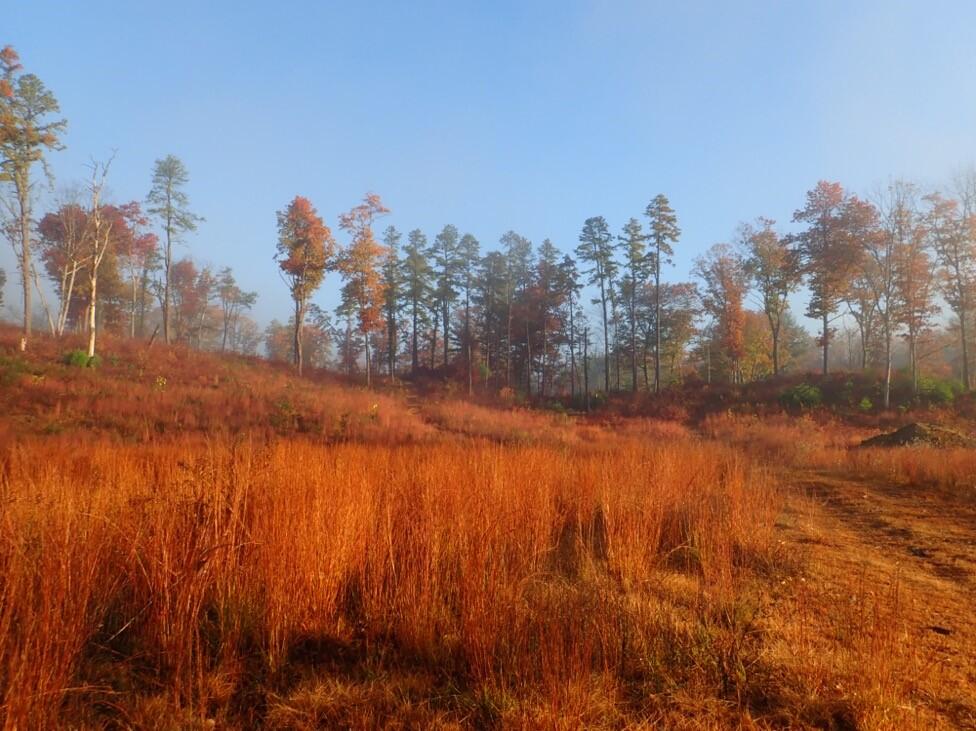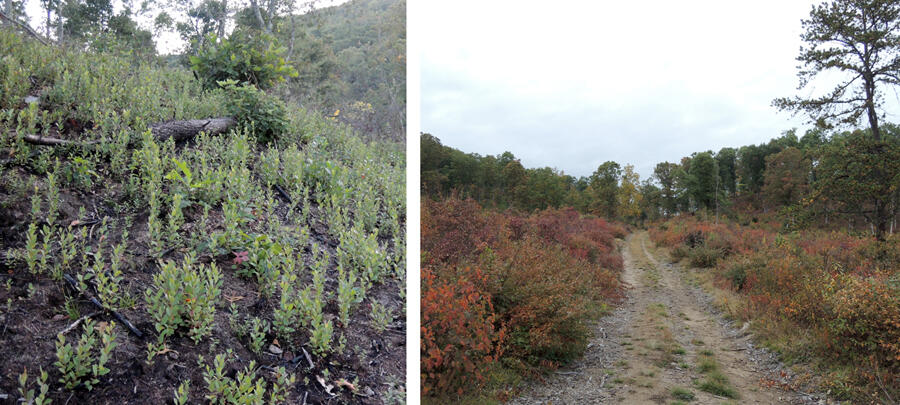- Division of Fisheries and Wildlife
Media Contact
Media Contact, MassWildlife

More than a dozen years after planning began, MassWildlife has completed the first phase of a 500-acre barrens wildlife habitat restoration project. Habitat management actions took place on 375 acres in the Muddy Brook Wildlife Management Area, and 125 acres of the adjacent Muddy Brook Wildlife Conservation Easement (aka Mixter/Nields Memorial Forest) owned by the New England Forestry Foundation (NEFF) in Hardwick. "We are excited to partner with MassWildlife on an ecological restoration effort which supports multiple rare and common wildlife and plant species,” said NEFF Executive Director Bob Perschel. “It's a good example of how organizations can work together to achieve common conservation goals that benefit people, wildlife, and the diverse forest communities in which they live." MassWildlife has already documented benefits to many types of wildlife on portions of the 500 acres where barrens restoration work has been done.
The greater Muddy Brook Valley represents an important and rare collection of fire-influenced barrens habitat communities in Massachusetts. Restoring barrens is critical to conserving the distinct plants, insects, and animals—including 75 species on the Massachusetts Endangered Species List—that depend on these uncommon habitats.
Over the past six years, tree canopy has been thinned to reduce high fuel loads and to stimulate growth of barrens plants like lowbush blueberry, scrub oak, and New Jersey tea. Two separate prescribed burns were successfully conducted at the site in Spring 2019.
Biologists have already documented positive results from prescribed fire and cutting activities at the site. MassWildlife Habitat Specialists monitoring the site have seen long-absent birds like the whip-poor-will, along with pollinators and specialized plants, returning to the area. Biologists monitoring the native pollinating insects at Muddy Brook WMA observed a dramatic, positive increase as a result of restoration activities. Within one year after prescribed burns, an abundance of lowbush blueberries, native little blue stem grasses, and scrub oaks are now established in the treated areas.
Habitat gains may not be obvious to the casual observer. “The site may look bare following initial restoration work,” said John Scanlon, MassWildlife’s Habitat Program Manager. “However, in a relatively short period of time, the cut and burned areas will be covered with sprouting native plants and tree seedlings. The reestablishment of this barrens habitat provides the necessary food, cover, and homes for both common and rare animals and pollinators that require this special type of habitat." The next phase of this project will involve developing prescribed fire plans for the property, creating fire breaks, and eventually conducting more prescribed burns.
- Learn more about barrens restoration at Muddy Brook WMA
- Learn more about the benefits of restoration and management
- Learn more MassWildlife's prescribed fire program

